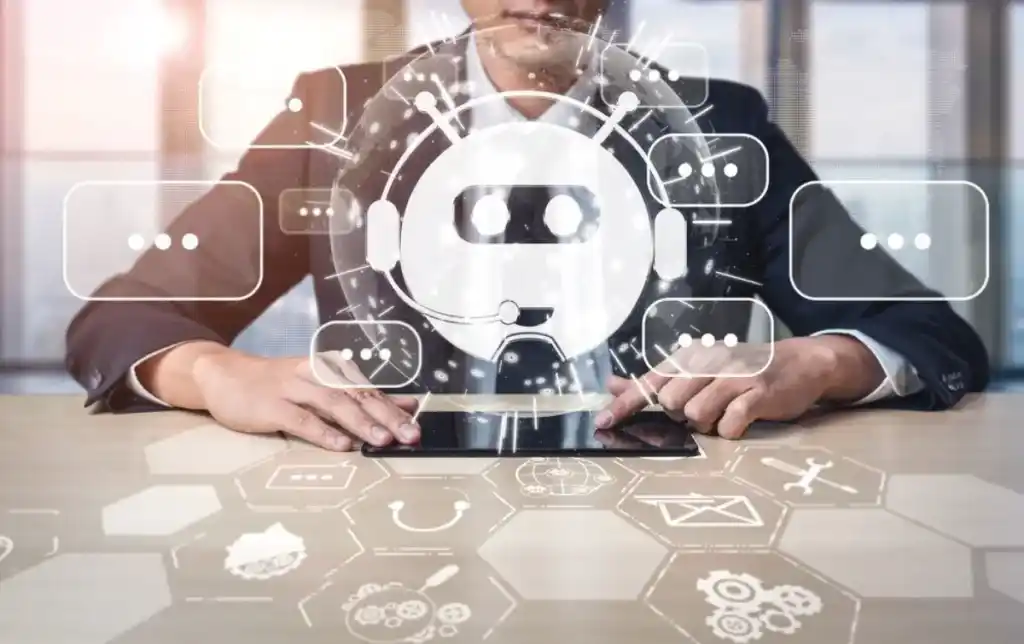
Cybersecurity Predictions for 2025: Trends to Watch
As we rely more on digital systems, cybersecurity worries people, businesses, and governments. With attacks getting smarter and technology changing fast, protecting digital assets isn’t just about firewalls and antivirus software. It’s now about being forward-thinking, resilient, and adaptable.
In 2025, online security will change a lot. Artificial intelligence, quantum computing, and global tensions will all connect with cybercrime. The stakes are higher than ever. So, understanding new cybersecurity trends is key to staying ahead.
This write-up looks at future predictions, highlights possible risks, and discusses key technologies and methods that will affect digital security.

1. AI-Powered Attacks and Defences
The Double-Edged Sword of Artificial Intelligence
AI and machine learning are now used more and more in the cybersecurity battle. By 2025, attackers will keep using AI to boost cyberattacks. They will make malware that changes in real time. They will also run spear phishing campaigns that look like real human messages.
What to Expect:
- AI-generated deepfakes used in social engineering
- Automated vulnerability discovery tools to identify weak spots at scale
- Adaptive malware that changes code signatures to bypass traditional detection
However, defenders are fighting back with AI too.
Defensive Innovations:
- Behavioural analytics to detect anomalies
- Real-time threat detection using neural networks
- Automated incident response and remediation tools
Prediction: In 2025, the AI arms race will shape cybersecurity trends. Organisations will invest a lot in AI-driven detection and response systems.
2. Quantum Computing: A New Security Paradigm
The Coming Cryptographic Crisis
Quantum computing poses a significant threat to current encryption standards. Quantum machines aren’t here yet, but they could change everything. They might break the cryptographic algorithms we rely on. This could endanger our email privacy and financial transactions.
Implications:
- Traditional RSA and ECC encryption may become obsolete
- Critical infrastructure and sensitive databases could be exposed
- Quantum-resistant algorithms will need to be developed and deployed at scale
Governments and tech giants are already preparing for this future. The U.S. National Institute of Standards and Technology (NIST) is creating standards for post-quantum cryptography. Similar efforts are also happening around the world.
Prediction: By 2025, post-quantum encryption will change from a theory to a need for high-security systems.

3. Zero Trust Architecture Becomes Standard
“Never Trust, Always Verify”
The Zero Trust model believes threats can arise from both inside and outside the network. This means that no user or device is automatically trusted. Access is continuously verified, with strict authentication and micro-segmentation of network zones.
Adoption Drivers:
- Rise in hybrid and remote work
- Proliferation of IoT and edge devices
- Complex supply chain ecosystems
Components of Zero Trust:
- Multi-factor authentication (MFA)
- Continuous monitoring and risk assessment
- Least-privilege access principles
Prediction: In online security 2025, Zero Trust won’t be a trend—it will be the norm. Organisations that fail to adopt it will be at heightened risk of breach.
4. Ransomware-as-a-Service (RaaS) Expansion
Industrialising Cybercrime
Ransomware attacks are now more profitable, focused, and easier to access. Ransomware-as-a-Service is the reason for this. Here, developers rent their ransomware to affiliates. In return, they get a share of the profits.
What to Watch:
- Double extortion (data encryption + data leak threats)
- Attacks targeting healthcare, education, and government
- Cryptocurrencies used for anonymous ransom payments
Emerging cybersecurity trends suggest that threat actors will continue professionalising operations, including:
- Customer support for victims
- Affiliate recruitment
- Sophisticated negotiation tactics
Prediction: Without worldwide teamwork and strong crypto-rules, RaaS will keep growing. This will push companies to rethink their backup, detection, and recovery plans.

5. 5G and IoT: Expanding the Attack Surface
The Risks of Hyperconnectivity
The escalation of 5G networks and Internet of Things (IoT) technologies—smart temperature controls, networked automobiles, wearable health monitors—introduces remarkable convenience but also considerable threats.
Key Concerns:
- Weak security protocols in consumer-grade devices
- Insecure firmware updates
- Exploitable network endpoints
These connected devices often don’t have strong patching systems. This attracts hackers for botnet recruitment, spying, or as ways into larger systems.
Prediction: By 2025, 5G and IoT will combine, leading to larger attack surfaces. Governments and manufacturers will face mounting pressure to impose security-by-design standards.
6. Cybersecurity Regulations and Data Sovereignty
Governments Take a Harder Line
In 2025, data will play a key role in national security. So, we can expect stricter rules for handling data, especially when it crosses borders.
Key Trends:
- Data localisation laws requiring data to be stored and processed within national borders
- Mandatory breach reporting within tight timeframes
- Cyber insurance regulation to combat claim inflation and ensure adequate protection standards
Examples include:
- The EU’s GDPR and upcoming Digital Services Act
- The UK’s NIS2 Directive for critical infrastructure protection
- China’s Data Security Law with extraterritorial reach
Prediction: Organisations must manage a more complex web of compliance and privacy rules. This will reshape their global data strategies.
7. Cybersecurity Skills Shortage Deepens
Demand Outpaces Supply
Despite increasing investment, the industry continues to face a talent crisis. The global shortage of cybersecurity workers may hit 3.5 million unfilled jobs by 2025.
Challenges:
- High turnover due to burnout
- Lack of diversity in the talent pipeline
- Rapidly evolving skill requirements
Solutions on the Horizon:
- AI-assisted tools to augment human analysts
- Cybersecurity apprenticeships and re-skilling initiatives
- Inclusion of cybersecurity in core education curriculums
Prediction: Talent development will become a strategic imperative. Organisations will invest in internal upskilling and cross-disciplinary hiring to close the gap.
8. Biometric and Behavioural Authentication
Moving Beyond Passwords
Traditional passwords are losing their relevance, a relic of the past. By 2025, we’ll embrace biometric and behavioural authentication, a savvy security evolution. Both consumers and enterprises will unlock new levels of safety. It’s time to secure our digital doors with a touch or a glance.
Emerging Technologies:
- Facial recognition and iris scans
- Voice pattern analysis
- Typing rhythm and device usage habits
Biometrics provide convenience and better security, but they also raise privacy issues. Plus, if this data is compromised, it can’t be changed.
Prediction: Multi-modal authentication will lead the way in identity security. It combines biometrics, behavioural signals, and contextual data.
Protecting Individuals in a Threat-Rich Future
While businesses often focus on cybersecurity, individuals are equally at risk—especially in a world that’s so connected.
Top Tips for Personal Online Security in 2025:
- Use a password manager and enable multi-factor authentication
- Keep all devices updated with the latest security patches
- Be cautious of deepfake audio or video scams
- Avoid clicking on suspicious links, even from known contacts
- Stay informed through reputable cybersecurity news outlets
Cybersecurity education at home will be as important as antivirus software.
Anticipating and Adapting to the Cyber Future
Cybersecurity in 2025 will be defined by complexity, collaboration, and innovation. Future threats are more complex and adaptable than ever. But we also have better tools and strategies to tackle them.
Organisations prioritising cybersecurity at the board level are the true frontrunners. By investing in people and taking initiative, they strengthen their assets and reputations. At the same time, individuals must champion their own digital hygiene. Today, privacy and protection are linked, so taking personal responsibility is key.
Take action today! Assess your organisation’s security stance. Explore new ways to authenticate. Also, take a look at your own online habits. Because in online security 2025, awareness is your first and most powerful defence.


